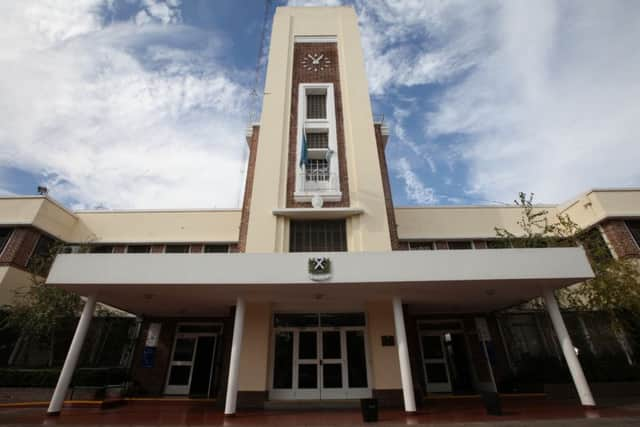Scotland's influence on Argentina, Russia and Jamaica


The Escuela Escocesa San Andrés - or St Andrew’s Scots School - has been admitting students since 1838, making it the oldest school of British origin in South America.
While the links between Scotland and countries like Canada, Australia and New Zealand are well-known, the stories of settlements in non-English speaking regions and smaller former colonies are comparatively seldom discussed.
Advertisement
Hide AdAdvertisement
Hide AdNow efforts are being made to further understand the relationships between Scotland and expatriates in far-flung places.


Argentina can boast the largest Scottish community outside the English-speaking world, with an estimated 100,000 people claiming Scottish ancestry, and their legacy is still celebrated to this day.
“All of our main institutional events start or end with a bagpiper, or our own Highland Thistle pipe band, and Scottish dancers,” said Brenda Leniek, communications officer at St Andrew’s Scots School.
“Our uniform is based on the Lamont ancient tartan and the St Andrew´s cross.”
Among its former teachers is Alexander Watson Hutton, an Edinburgh University graduate who is now widely acknowledged as the father of Argentinian football.


He popularised soccer among Buenos Aires school pupils after arriving in the country in 1882.
The library at the Argentinian Football Association is named in his honour.
Advertisement
Hide AdAdvertisement
Hide AdDescendents of Scots immigrants would continue to make their influence felt in the country.
José Luis Brown, who scored Argentina’s first goal in their 3-2 win World Cup final victory in 1986, is a direct descendent of a Scot who emigrated in 1825.


Scots were among several nationalities who found work in the military of Imperial Russia in the 18th century.
Samuel Greig, born in the small Fife port town of Inverkeithing in 1738, is known as the father of the Russian navy.
But he was only one of many Scots to make their mark in St Petersburg and Moscow, according to research by the University of Aberdeen.


The first Scots in Russia were known by locals as Shkotskie Nemtsy - literally ‘Scottish Germans’ - reflecting the Baltic ports with historical links to Scotland where they had originated.
The legacy of Scots settlers is far from universally positive, however.
Advertisement
Hide AdAdvertisement
Hide AdThe Caribbean island nation of Jamaica, a British colony as recently as 1962, is famously said to be home to more Campbells per head of population than Scotland.
As much as 60 per cent of the island’s population are estimated to have surnames of Scottish origin, while popular tourist resorts have names like Culloden Cove.
In 1800, Jamaica was home to an estimated 300,000 slaves, the vast majority of whom were of African origin and forced to work in the island’s booming sugar industry. At the same time, around 10,000 Scots and a similar number of English were employed as plantation managers and other jobs associated with the sector.
“Originally officially excluded from the English slave trade, Scots such as Colonel John Campbell left the failed Scottish colonial experiment in Darien, Panama and arrived in Jamaica between 1697 and 1700,” said Sir Geoff Palmer, professor emeritus in life sciences at Heriot-Watt University in Edinburgh, and the author a book on the subject.
Professor Palmer, who was born in Jamaica, added the fourth article of the 1707 Act of Union between Scotland and England allowed Scots to join the English slave business.
“It was an incentive to sign,” he said. “Young Scotsmen rushed to the Caribbean to make quick fortunes as slave masters, slave doctors and administrators.”
A more positive legacy of Scots migration to Jamaica is the island’s national flag. The distinctive green, yellow and black saltire was suggested to prime minister Alexander Bustamante by his friend, the Rev. William McGhie, a Presbyterian missionary.
Advertisement
Hide AdAdvertisement
Hide AdMcGhie’s design is the inspiration behind the Flag Up Scotland Jamaica community group, which was established in 2014 and aims to “inform and educate people about the links between Scotland and Jamaica, strengthen these links and build new ones.”
Professor Palmer is among its committee members.
“There is an increasing awareness of the links between Scotland and Jamaica,” he said. “More people are visiting from one another as a result.
“It shows you an honest history doesn’t necessarily mean a negative response.”
Flag Up were recently awarded £10,000 in lottery funding towards ScotJamFest, a cultural event planned for August this year across several venues in Scotland.